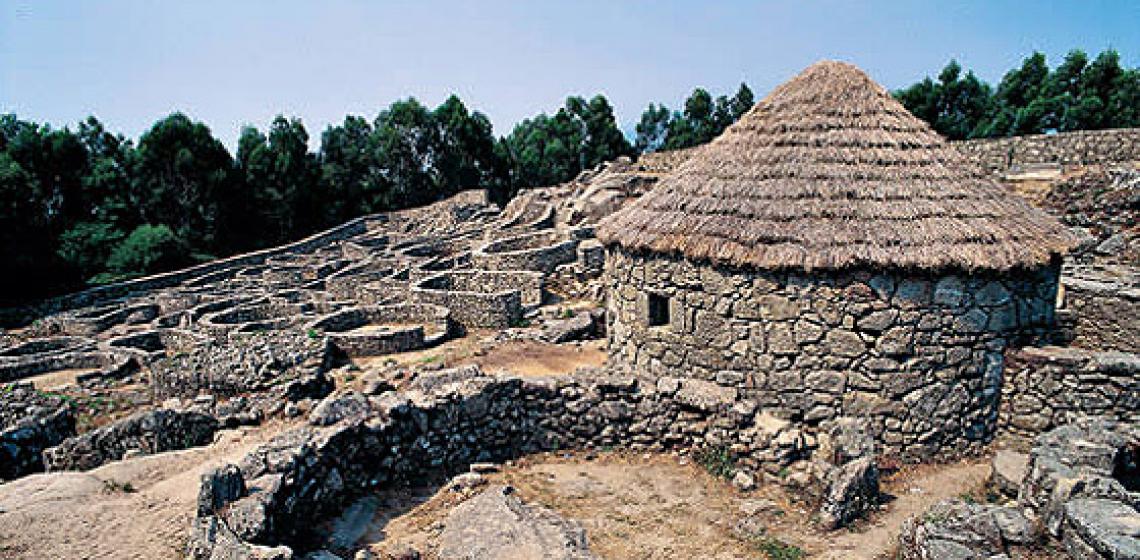Castro de Santa Tecla (ES)

The Castro de Santa Tecla (or Santa Tegra) is located in the Southwest tip of Galicia, on top of the Mount Santa Tecla, next to the mouth of the Miño River, in the municipal area of A Guarda (Pontevedra). From this site, a wide part of the coast as well as the mouth of the river Miño could be controlled.
Excavations have already taken place since 1914. It is estimated that about 50% of the castro has been excavated so far. You reach the Castro via a purpose built road for which there is a small entry charge.
The castro was probably in use from about 30 BC up until 90 AD when it was abandoned. This was the period of the early stages of the integration of this area into the Roman Empire – social economic changes of which probably lead to its abandonment and the moving of the population elsewhere. The site provides a good example of the typical features of the Galician settlements during the first era of the Roman occupation of Galicia.
The hill has an indoor museum area which displays the artefacts found on site. The first few decimetres of the walls of the original houses are reconstructed. Besides that, the city walls are reconstructed as well as two dwellings. The outside wall might have functioned as a visual border instead of as defence. The north entrance consists of narrow stairs. The structures inside the castro are circular or oval shaped, perhaps due to Roman influences. All of them appear in isolation, with no encircling walls. Many of them are painted or have geometric carvings like spirals, ‘basket works’ or wheels or knots. As some of the structures might have been inhabited, others were meant for storage. Both agricultural lands as areas where to collect shell fish were within walking distance. One can recognise combinations of residential structures and storehouses in closed units, with a central patio. The uneven surface led to forming of terraces. Many grinding stones and hand mills for making flour were detected during the excavations although maritime and international trade has also been part of this society. Roman amphorae as well as locally produced pottery were found. Glassware from the Oriental areas of the then Roman Empire are important finds as well. An exceptional gold torque with a granulated and filigree geometric design, particularly stands out.
